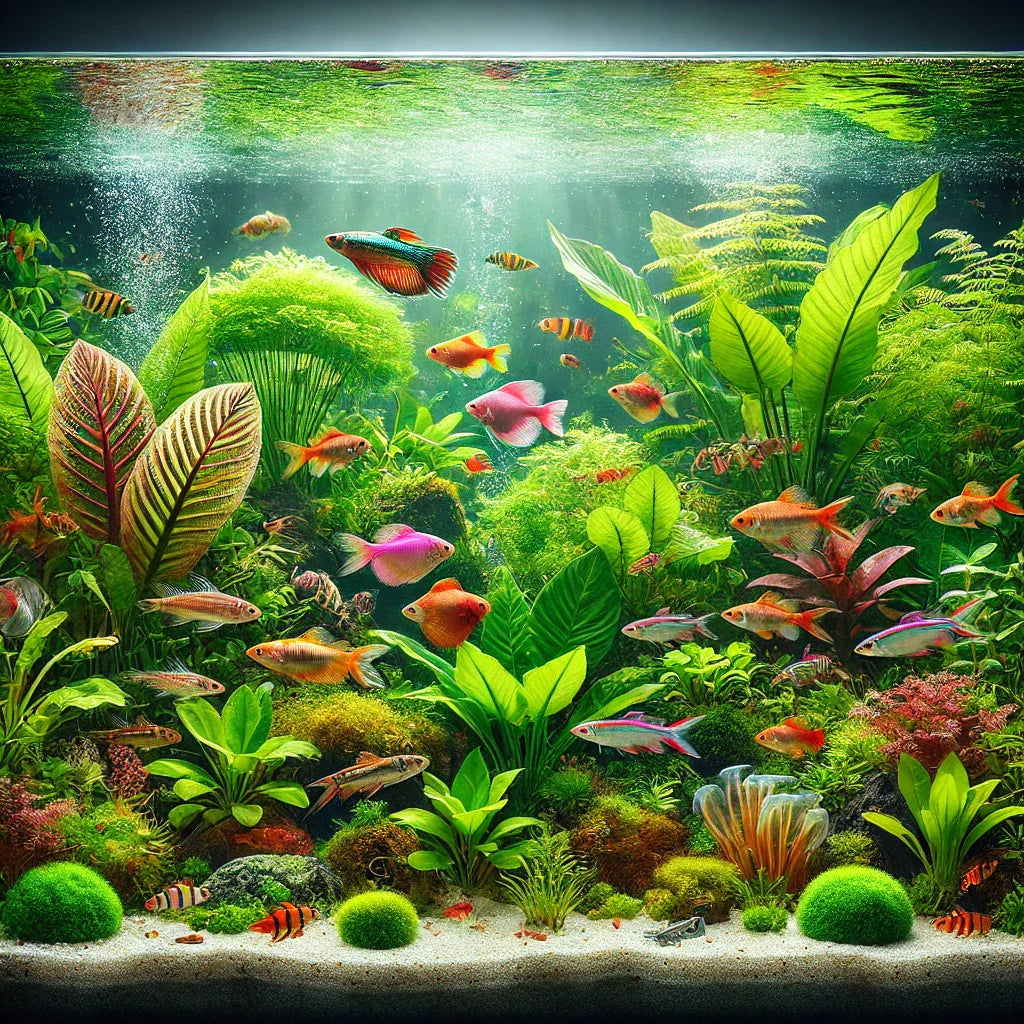
Aquatic Harmony: Enhancing Your Aquarium with Live Plants | Furr Havens
Share
Prologue
An aquarium is a world within glass walls, a miniature ecosystem where life unfolds in silence and color. For fish, it is both sanctuary and stage. Yet too often, tanks are filled with artificial ornaments that look pretty but fail to nourish the living environment. Live plants bring aquariums to life in ways that no plastic décor can match. They oxygenate, purify, and balance, while also creating habitats that encourage natural behavior.
At Furr Havens, we believe aquariums should be more than decoration; they should be living, breathing sanctuaries. Adding live plants transforms your tank into a balanced ecosystem that benefits not only fish but also the humans who watch them.
1) Why Live Plants Matter: The Science of Balance
Live plants perform essential ecological functions:
-
Oxygenation: Through photosynthesis, plants release oxygen into the water, supporting fish health.
-
Filtration: Plants absorb nitrates and ammonia, reducing toxins and algae growth.
-
Stabilization: Root systems hold substrate in place, preventing cloudiness.
-
Temperature Buffering: Dense greenery moderates micro-climates within tanks.
👉 Fact: According to studies in aquatic biology, tanks with live plants show up to 40% fewer ammonia spikes, reducing stress-related illness in fish.
2) The Emotional and Aesthetic Rewards
For humans, planted aquariums provide calm. Watching fish glide through green canopies lowers stress and blood pressure. Offices with aquariums report increased focus among employees. At home, aquascaping becomes an art, a form of living meditation.
Owner Story: A hobbyist replaced plastic décor with live Java Ferns and noticed her betta fish became more active, building bubble nests for the first time — a sign of improved wellbeing.
3) Choosing the Right Plants for Your Tank
Not all plants are created equal. Selection depends on tank size, lighting, and skill level.
-
Beginner-Friendly Plants
-
Java Fern: Hardy, grows without substrate.
-
Anubias: Slow-growing, shade-tolerant.
-
Amazon Sword: Large, dramatic leaves, perfect for mid-background.
-
-
Intermediate Plants
-
Cryptocoryne: Variety of colors, requires stable water.
-
Vallisneria: Creates grassy curtains.
-
-
Advanced Plants
-
Glossostigma: Carpet effect, requires strong lighting and CO₂.
-
Rotala: Vivid red hues under high light.
-
👉 Furr Havens Tip: Start small with hardy species. Once confident, expand to carpeting or colorful plants.
4) Creating Aquatic Harmony: Layout and Design
Aquascaping is the art of arranging plants, rocks, and wood to mimic nature.
-
Foreground: Carpeting plants for lush ground cover.
-
Midground: Bushy species for depth.
-
Background: Tall plants to frame the tank.
Golden Rule: Design with flow. Fish should have both open swimming areas and shaded retreats.
5) Maintenance: Sustaining the Ecosystem
Live plants require care, but the effort pays dividends.
-
Lighting: 8–10 hours daily, mimicking daylight.
-
Substrate: Nutrient-rich bases nourish roots.
-
Fertilizers: Liquid supplements replenish minerals.
-
Pruning: Regular trimming prevents overcrowding.
Checklist for Healthy Plants
✔ Provide consistent lighting.
✔ Test water weekly.
✔ Trim dead leaves to prevent decay.
✔ Avoid overstocking fish (excess waste destabilizes balance).
6) Fish and Plant Synergy
Plants reduce stress by giving fish places to hide. Shy species, like tetras or corydoras, flourish in planted environments. Some species even interact with plants directly:
-
Goldfish nibble leaves (choose sturdy species).
-
Bettas lounge on broad leaves like hammocks.
-
Shrimp graze on biofilm growing on plants.
7) Challenges and Solutions
-
Algae Growth: Balance light and nutrients; add algae-eating species like snails.
-
Plant Melting: Some plants lose leaves during acclimation but regrow once settled.
-
Pests: Rinse plants before introducing to avoid hitchhikers.
8) FAQ: Plant Care Simplified
Q: Do live plants require CO₂ injection?
A: Only advanced species. Most beginner plants thrive without it.
Q: Can plants survive in low-light tanks?
A: Yes. Species like Anubias and Java Fern are ideal.
Q: Will live plants make cleaning harder?
A: No. They actually reduce algae and stabilize water, lowering maintenance.
Q: Are they safe for all fish?
A: Most yes, but large herbivores may nibble them. Choose sturdy species for such tanks.
Epilogue / CTA
An aquarium with live plants is more than beautiful — it is alive in every sense. By choosing greenery, you invest in the health of your fish, the stability of your tank, and the serenity of your home.
At Furr Havens, we provide aquascaping essentials and live plant care solutions that turn glass boxes into living sanctuaries. Build harmony beneath the water’s surface, and discover the joy of a thriving aquatic world.
